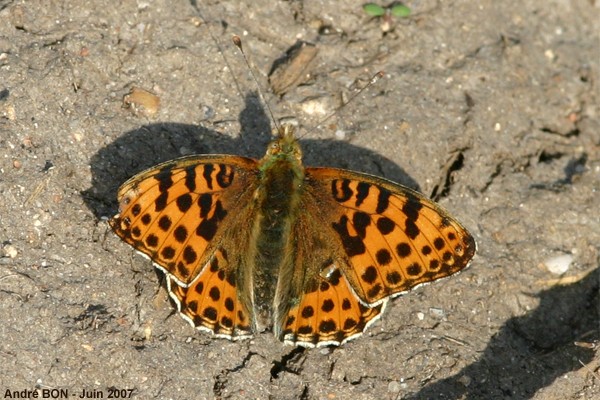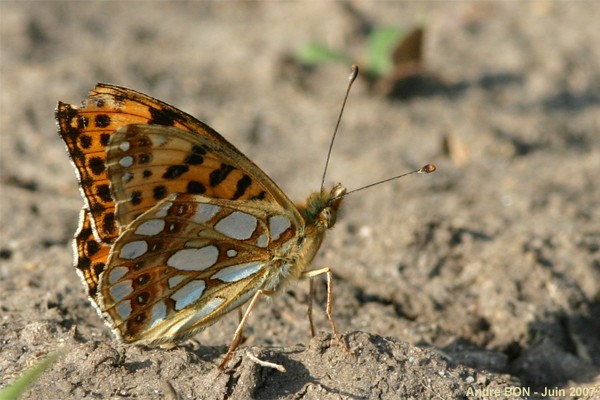

| Queen of Spain Fritillary (Issoria lathonia (Linnaeus, 1788)) |


|
|
Scientific name: Issoria lathonia (Linnaeus, 1788) Common name: Queen of Spain Fritillary French name: Petit Nacré Order: Lepidoptera Suborder: Rhopalocera Family: Nymphalidae Subfamily: Nymphalinae Wingspan: 35 to 45 mm. Biotope: Dunes, wastelands, dry meadows and flower meadows. Geographic area: Europe north to the centre of Scandinavia, North Africa, Central Asia. This is a partially migratory species. Flight time: April to October. Number of generations : Up to 3. Caterpillar: Brownish grey with black spots and two rows or white stripes on the back. It shows some short brown white-tipped hairs. Host plant: Different Violet species, like Viola tricolor, Viola calaminaria, Viola arvensis. |
The upper side of the Queen of Spain Fritillary is an orange colour with rows of well defined round black spots. The tip of the forewings is slightly sharper than on other fritillaries. The underside of the hindwings is russet with several large silver blobs. There is one row of silver-pupiled black eyespots and some silver blobs near the forewing tips. Late broods are more important than the spring brood. The Queen of Spain Fritillary can overwinter in any step of its lifecycle (egg, caterpillar, pupa, imago). |
| [To know more about the Queen of Spain Fritillary] [Next picture] [Top] |

|
Maybe tired after a long distance flight, this Queen of Spain Fritillary, landed on the ground, was very easy to approach. |
| [To know more about the Queen of Spain Fritillary] [Previous picture] [Top] |

|
The view of the underside of the wings makes the identification quite certain. This is a general rule for all fritillaries. |